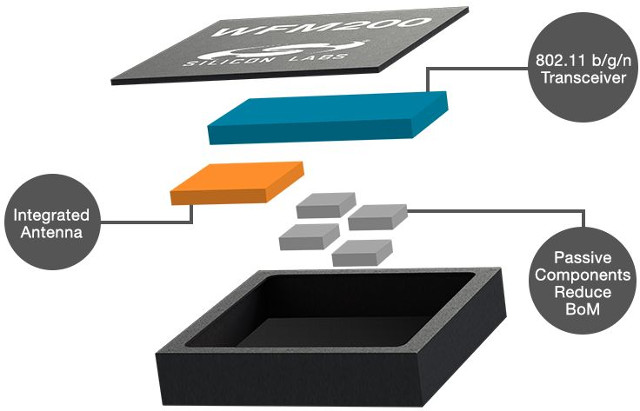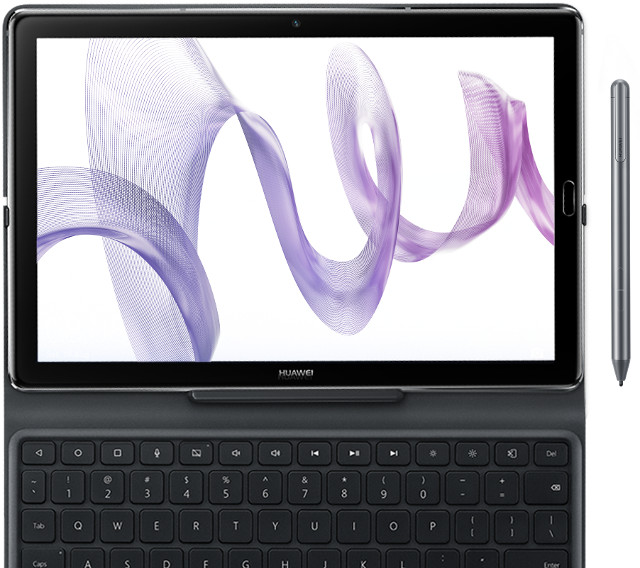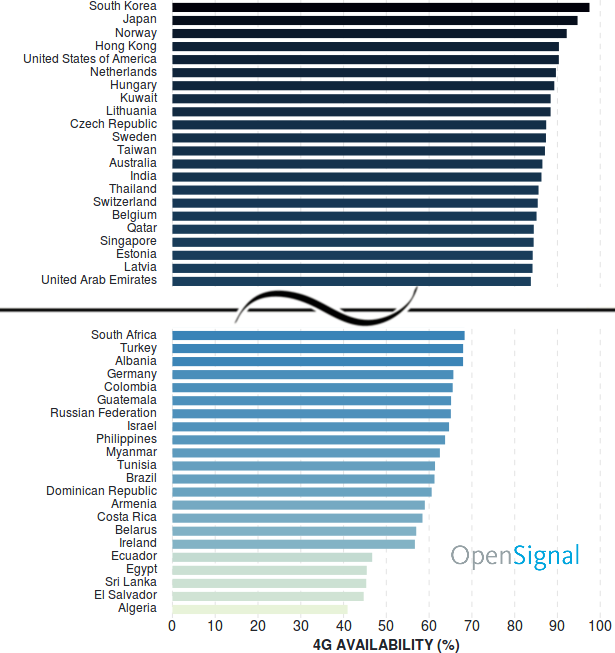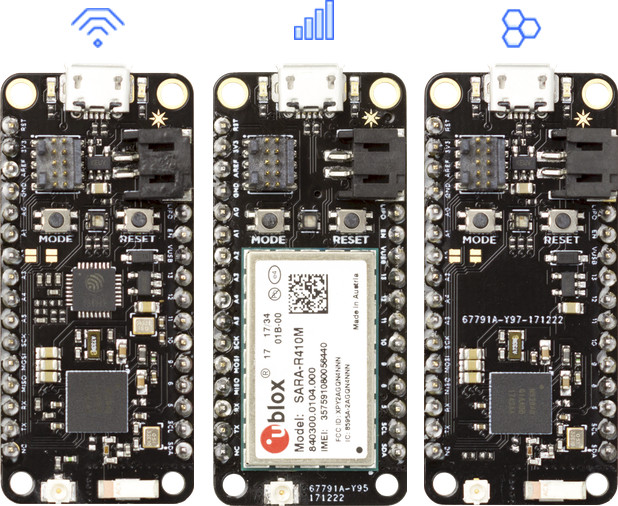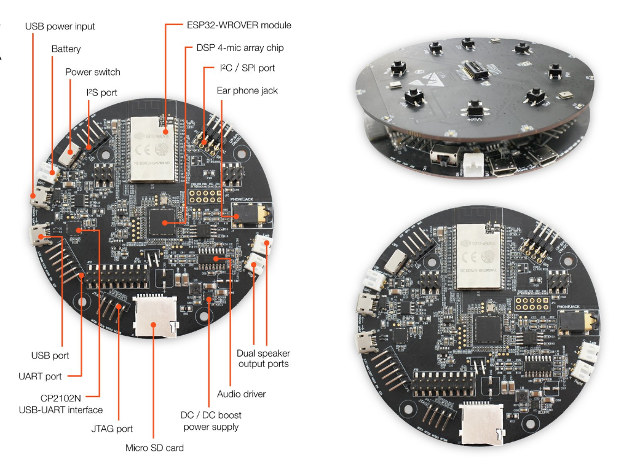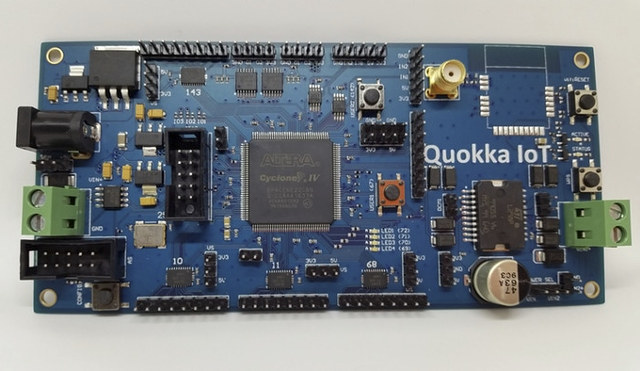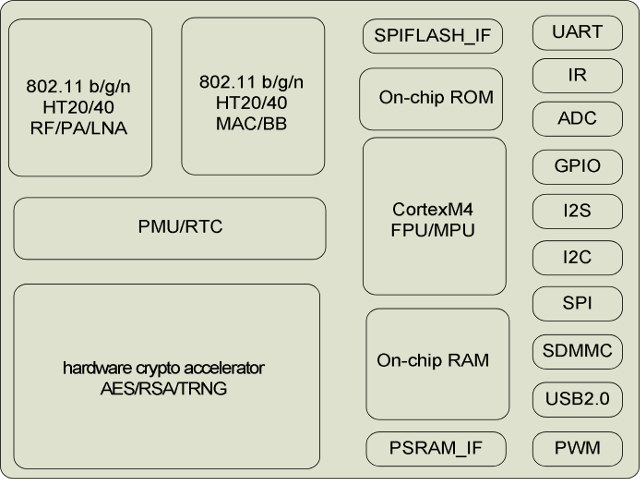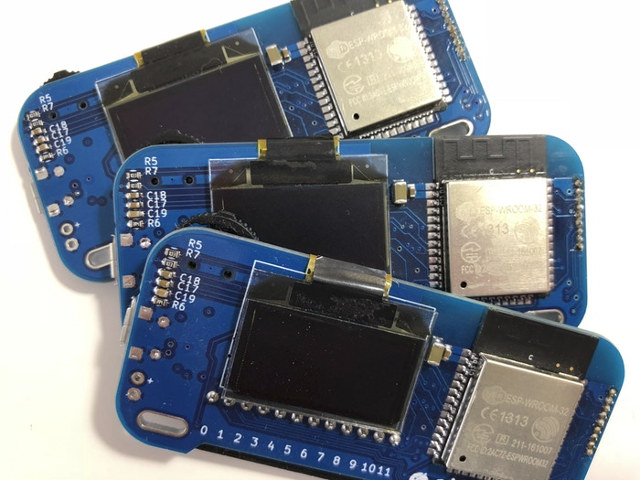When it comes to power consumption, WiFi is not the best wireless standard around, and even the most power efficient WiFi SoCs/modules consume several times the power required for Bluetooth LE Tx or Rx. Yet we still have plenty of battery powered devices relying on WiFi, so companies are working on improving efficiency, and Silicon Labs has recently announced the WF200 transceivers and WFM200 modules that support 2.4 GHz 802.11 b/g/n Wi-Fi and are said to slash power consumption in half. WF200 / WFM200 highlights: Low transmit (Tx: 138 mA) and receive (Rx: 48 mA) power 200 µA average Wi-Fi power consumption (DTIM = 3) Link budget of 115 dBm for long-range Wi-Fi transmissions Excellent antenna diversity and wireless coexistence in crowded 2.4 GHz environments Security – Secure boot and host interface, hardware cryptography acceleration supporting AES, PKE and TRNG Packages – 4 mm x 4 mm QFN32 transceiver and […]
Huawei MediaPad M5 Tablets Come with Kirin 960 Processor, 8.4″ or 10.8″ Display, Optional LTE
Huawei has unveiled three MediaPad M5 tablets at Mobile World Congress 2018 with one model with a 8.4″ display, another with a 10.8″ display, and a Pro model adding a pen, support for an optional keyboard cover, more storage to the latter. All models will come with Hisilicon/Huawei Kirin 960 octa-core Cortex A73/A53 processor, displays with 2560×1600 resolution, plus WiFi and optional LTE connectivity. MediaPad M5 / M5 Pro specifications: SoC – Kiron 960 octa-core processor with four Cortex A73 cores @ 2.4 GHz, four Cortex A53 cores @ 1.8 GHz, Arm Mali-G71MP8 GPU System Memory – 4GB RAM Storage – 32 to 128GB internal storage, micro SD card slot Display – 8.4″ or 10.8″ 2560 x 1600 pixels, Enhanced ClariVu display Connectivity – Wi-Fi 802.11a/b/g/n/ac, 2.4 GHz & 5 GHz Cellular Connectivity – LTE FDD / LTE TDD / WCDMA / GSM (Enabled only on the SHT-AL09 version) Location […]
OpenSignal Report Shows 4G LTE Availability and Speed around the World
We may be starting to see more news about 5G technology whose deployment should start in 2019, but 4G LTE coverage and performance depends very much where you live, as we can see from a recent State of LTE report by OpenSignal which gathered close to 60 billions data points out of almost 5 millions phones aroudn the world during the last three months of last year. The new data shows 4G average speed in the top performing country seems to have hit a plateau at around 45 Mbps, but availability keeps on improving across the board. The reports generated two main charts, with the first reporting 4G networks availability per country, not in terms of geographic coverage, but instead OpenSignal tracked the proportion of time users had access to a particular network. 5 Country now have over 90% availability with South Korea, Japan, Norway, Hong Kong, and the United […]
Particle Unveils Three nRF52840 Bluetooth 5 Boards: Argon (WiFi), Boron (LTE), and Xenon, as well as Particle Mesh Technology
In the last year or so, Bluetooth has gotten an upgrade with the release of Bluetooth 5. The new protocol works on several existing platforms, but if you want support for the full set of Bluetooth 5 features such as longer range and higher bandwidth, we’ve seen you need a recent chip such as Nordic Semi nRF52840. However so far, AFAIK you had to buy Nordic Semi own development kit for play with nRF52840, and now Particle has announced not one, but three low cost development boards powered by nRF52840 chip starting at just $9, and supporting their newly announced Particle Mesh technology. So for some reasons, it appears they did not go with Bluetooth Mesh. Particle Xenon – Bluetooth 5 + Mesh Xenon is the cheapest model with the following specifications: SoC – Nordic Semiconductor nRF52840 Arm Cortex-M4F 32-bit processor @ 64MHz with 1MB flash, 256KB RAM Storage – […]
Espressif ESP32 LyraTD MSC HDK is Designed for Smart Speakers, Wireless Audio and other Smart Home Appliances
[Update February 17, 2018: The kit was previously referred as ESP32 LyRaTD MS1, but the company appears to have changed the name to ESP32-LyRaTD-MSC] So apparently voice command will represent 50% of all searches in the next two years, and everybody is jumping on the smart speaker bandwagon, with announcements from many companies at CES 2018, including Google’s Android Things + Assistant products‘ announcement, NXP i.MX 8M official launch, Amazon Alexa Voice Service (AVS) development kit from Amlogic and Allwinner, and more. Espressif Systems is about to join the party with their ESP32 LyraTD MS1 HDK (Hardware development kit) that most people will likely remember as “Audio Mic HDK” that was announced on Twitter. Espressif Audio Mic HDK specifications: Wireless Module – ESP32-WROVER module with 802.11 b/g/n WiFi and Bluetooth 4.1 LE connectivity. DSP – 4-mic array chip Storage – micro SD card for audio files Audio Audio driver chip […]
Quokka IoT FPGA Board is Programmable with C# Language (Crowdfunding)
Quokka FPGA IoT Controller is a board based on Altera Cyclone IV FPGA with a WiPy module for connectivity, and various I/Os that allows you to make robotics projects for example. While you could program the FPGA using VHDL, the developer – Evgeny Muryshkin – also designed Quokka Development Toolkit (QDT), a cloud-based SaaS, allowing to program FPGA with a high-level programming language, currently C#, so that software people can more easily become involved in FPGA development. Quokka IoT (preliminary) hardware specifications: FPGA – Intel Altera Cyclone IV, 6K logic elements, EP4CE6E22C8 Clock – 50MHz Connectivity – WiFi via WiPy module Expansion 40x GPIO (3 banks by 8 pins, with direction and voltage (3.3V or 5V) configuration, 16 raw IO pins 3.3V) 2x Dual Channel 10 bit ADC (3.3V) 2x Dual Channel 10 bit DAC (3.3V) H-Bridge for DC motors with support for external power Power Supply – 5-24V DC input […]
$1 RDA5981 WiFi IoT Arm Cortex-M4 SoC is Designed for Smart Home Devices, Smart Speakers
RDA Microelectronics processors are found in a few cheap smart and not-so-smart phones, as well as the even cheaper Orange Pi i96 board. But the company does not only design cellular chips, but their portfolio also includes solutions for the Internet of Things and TV & radio tuners. RDA5981 is a WiFi IoT chip specifically designed for smart home & audio application, such as smart speakers, and it’s found in devices running Baidu DuerOS, the Chinese equivalent of Amazon Alexa or Google Assistant. The company explains it can be widely used in televisions, set-top boxes, smart appliances, wireless monitors, and other products. RDA5981 A/B/C processor specifications: CPU – Arm Cortex-M4 @ up to 160 MHz with integrated MPU and mbed uvisor System Memory – Up to 448 KB SRAM for network stack and application, external PSRAM interface Storage – Up to 32Mbit SPI flash Connectivity WiFi 2.4 Ghz 802.11b/g/n WiFi […]
Obniz ESP32 Board is Programmable in JavaScript from the Cloud (Crowdfunding)
ESP32 WiFi / Bluetooth boards are now commonly supported by the Arduino IDE, and alternative firmwares are also available to program them using JavaScript (e.g. Espruino), or MicroPython. But if are familiar with JavaScript / Node.js, and don’t want to flash your own firmware, Obniz board could be an option. The board exposes 12 I/Os programmable from the company’s Cloud service, and features a OLED display used to show your program information, or a QR code to easily program the board from your smartphone’s browse once a WiFi connection has been setup. Obniz hardware specifications: Wireless Module – ESP-WROOM-ESP32 based on ESP32 dual core 802.11 b/n/g WiFi + Bluetooth LE WiSoC Display – 128×64 OLED display I/Os 12x I/O pins each configurable as GPIO, ADC, UART, SPI or I2C (no specialized pin, each can handle those functions) Up to 1A drive per I/O to control motors 3.3 or 5V selectable […]


